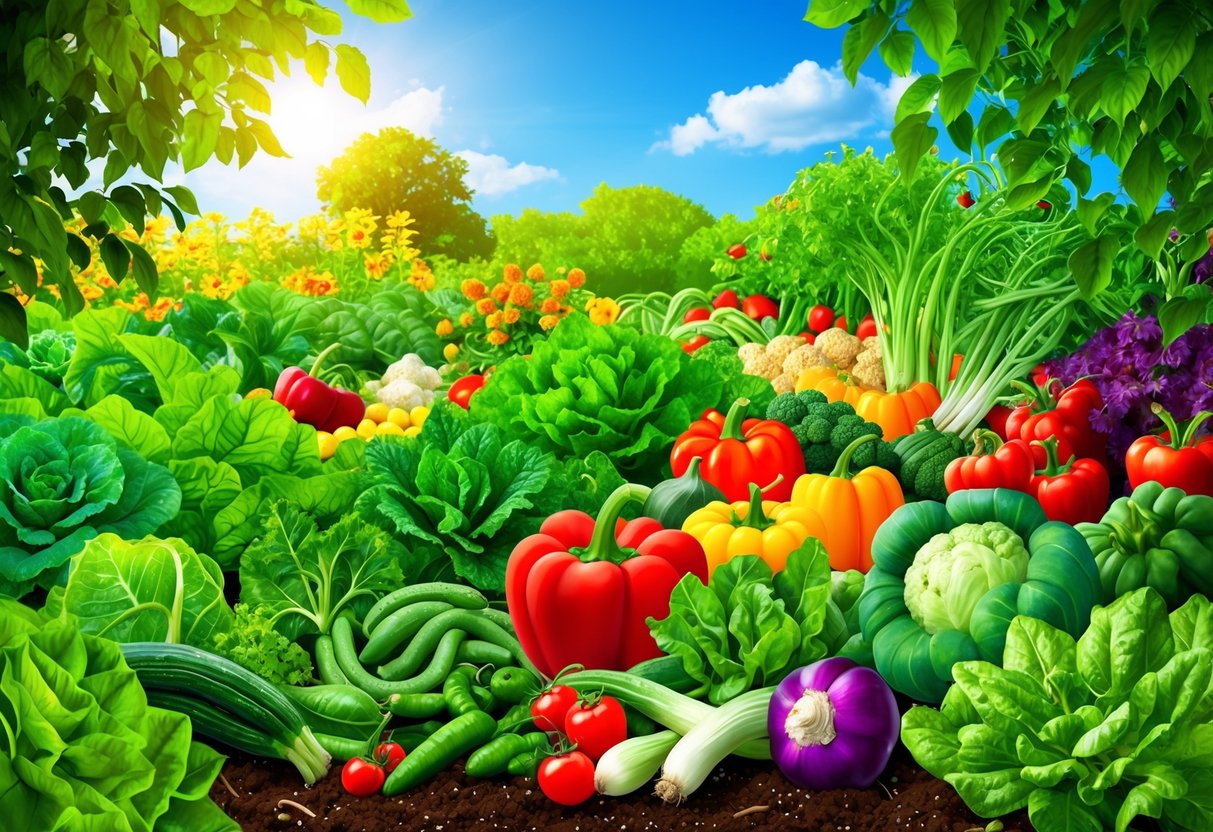
Arranging and Enjoying Flavorful Gourmet Harvests
Creative harvesting and thoughtful arrangement make gourmet vegetables truly shine. Bold colors, unique textures, and contrasting flavors add both beauty and taste, turning every meal into a celebration of fresh, organic produce.
Making Salad Mixes and Displays
A salad garden offers a range of gourmet greens such as arugula, mizuna, and red oak leaf, which are perfect for salad mixes. Home gardeners can pick tender leaves early in the day, when their flavor and crispness are at their peak.
Arranging salad mixes is best done by layering different shapes and shades. For example:
- Base: Arugula, baby spinach, and butterhead lettuce
- Texture: Frizzled endive, microgreens, and watercress
- Pop of color: Radicchio or red giant mustard
To build a display, use a wide, shallow dish and loosely mound the greens. Add roasted nuts, seeds, or sliced radishes for extra interest.
This approach highlights the diversity of a homegrown gourmet vegetable harvest.
Combining Fresh Herbs and Edible Flowers
Incorporating fresh herbs such as basil, chervil, or dill into salad mixes boosts both flavor and aroma. Snipping just-picked herbs ensures a potent, complex bite with every mouthful.
Edible flowers, including nasturtiums, pansies, and calendula, add vivid color and delicate fragrance to any plate. Always choose flowers known to be edible, and avoid using any that have been treated with chemicals.
To highlight these elements, scatter herb leaves and flower petals over the top of plated salads right before serving. This technique transforms a simple salad into a visually striking and flavorful creation fit for any gourmet table.
For ideas on unique edibles and inspiration, explore selections of gourmet veggies and flowers that thrive in home gardens.
Frequently Asked Questions
Growing gourmet vegetables at home involves careful selection of pots, soil preparation, strategic planning, and knowing which vegetables suit a beginner. Success depends on consistent attention to proper plant care, nutrient-rich environments, and seasonal timing for planting.
What are the optimal pot sizes and types for growing gourmet vegetables at home?
Gourmet vegetables like heirloom tomatoes, kale, and peppers benefit from deep pots with a minimum depth of 12 inches. Larger vegetables such as eggplants and tomatoes need containers that hold at least five gallons of soil.
Use terracotta, ceramic, or heavy-duty plastic pots with drainage holes to help prevent waterlogging. Raised beds are also effective for expanding growing space and improving soil quality.
What are the key steps to begin a vegetable garden for organic, flavorful produce?
Choose a gardening location that receives at least 6–8 hours of direct sunlight per day. Ensure the space is close to a water source and has well-drained soil that is not shaded by trees or buildings.
Clear the area of weeds and debris. Define manageable beds or containers to organize crops and facilitate ongoing care.
Starting an organic vegetable garden also means avoiding chemical pesticides and relying on organic compost and mulches.
How can one create the best soil mix for cultivating flavorful organic vegetables?
Rich, loose soil with a balance of compost, organic matter, and natural minerals supports root growth and enhances flavor. Mix equal parts garden soil, high-quality compost, and well-rotted manure for robust fertility.
Add organic amendments such as bone meal and rock phosphate for trace minerals. Regularly apply mulch to maintain moisture and control weeds throughout the growing season.
Which vegetables are best suited for a beginner’s organic garden and why?
Leafy greens like lettuce, arugula, and spinach grow quickly and are forgiving if mistakes occur. Radishes, green beans, and cherry tomatoes also thrive in containers and small plots with little effort.
These vegetables are resilient, have short growing cycles, and generally resist most pests and diseases. Beginners often see faster, rewarding results with these choices, making them ideal for organic kitchen gardens.
How does one plan a vegetable garden layout to optimize growth and flavor?
Organize taller crops like tomatoes and trellised beans on the north or east sides to avoid shading shorter plants. Space rows and containers to maximize airflow and minimize disease risk.
Separation of plant families also reduces pest buildup. Consider companion planting, such as pairing basil with tomatoes, to enhance flavor and promote natural pest control.
Rotation of crop locations each year is advised to maintain soil health over several seasons.
What is the ideal planting schedule to ensure a continuous harvest of gourmet vegetables?
Stagger plantings of fast-growing crops, like salad greens and radishes, every two to three weeks. Start cool-season crops in early spring and late summer.
Plant warm-season vegetables after the last frost date. Follow seed packet instructions for each gourmet variety and adjust timing based on local frost dates.